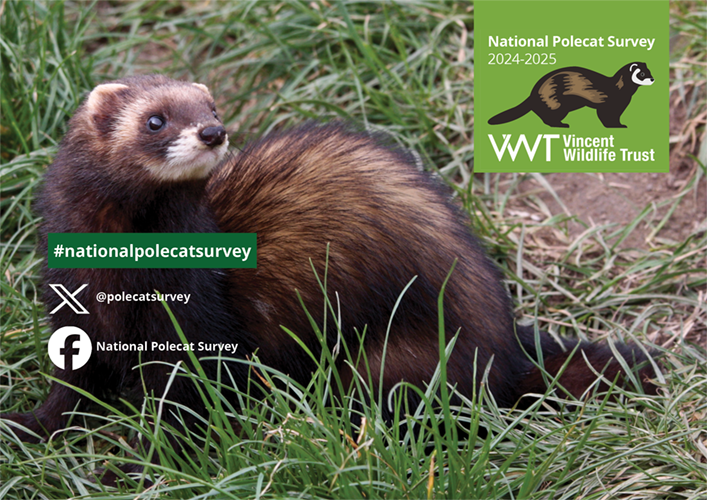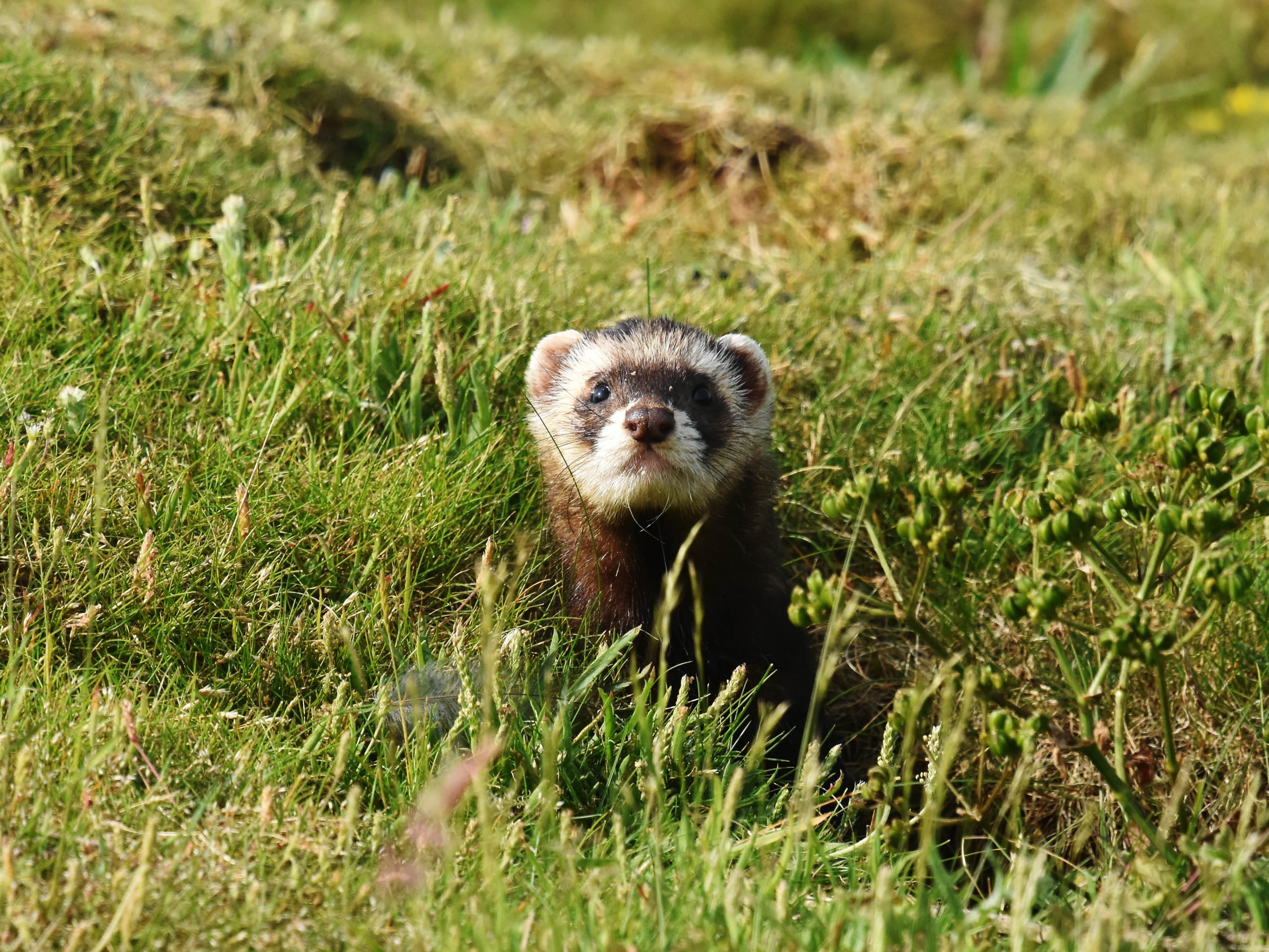
VWT is asking members of the public to become citizen scientists by submitting their sightings of polecats Mustela putorius and helping conservation scientists to learn more about these native mammals .
By sharing information about a polecat sighting, such as photographs and videos, and the location of the sighting, we can learn more about the current distribution and status of polecats in Britain. The polecat is an elusive mammal, and one of our least known species. They are typically nocturnal, can be found in a range of habitats, and they do not leave obvious field signs (such as scat or prints) that are easily surveyed for. Collecting records from members of the public is an excellent data collection tool for such a secretive mammal.

Polecat ©Moss Taylor
Polecats were once common across Britain until historical persecution caused them to become nearly extinct, and by the end of the 19th century they were confined to mid Wales and Welsh border counties. Since the 1990s, VWT has undertaken regular National Polecat Surveys to plot the path of the polecat as it has been naturally spreading back into its former range. Today, polecats can be found throughout Wales and central England, with VWT’s previous survey indicating a range expansion into parts of southern and eastern England. Isolated populations are also present in northern England and in Scotland.
The polecat is part of the mustelid (weasel) family and characterised by its long, thin body shape, which evolved to enable it to pursue its prey (rabbits and rats) down burrows. The polecat is the wild ancestor of the domesticated ferret, and they can interbreed and produce polecat-ferret hybrids. All three can also look very similar, however there are often differences in coat colour and behaviour.
You may be lucky enough to encounter a polecat in person whilst driving or walking, have one living in your garden, or have captured one on a trail camera! Observing deceased polecats on roads is also common evidence of their presence. Whatever your polecat encounter may be during 2024 and 2025, we would like to hear about it!
Head over to our National Polecat Survey page to find out how you can submit your sighting.
VWT is also interested in receiving hair and whisker samples from deceased polecats for future research. Contact Katherine Morley at enquiries@vwt.org.uk for more information if you have found a deceased polecat and are happy to collect samples on our behalf.
Photo: Polecat ©Anne Newton